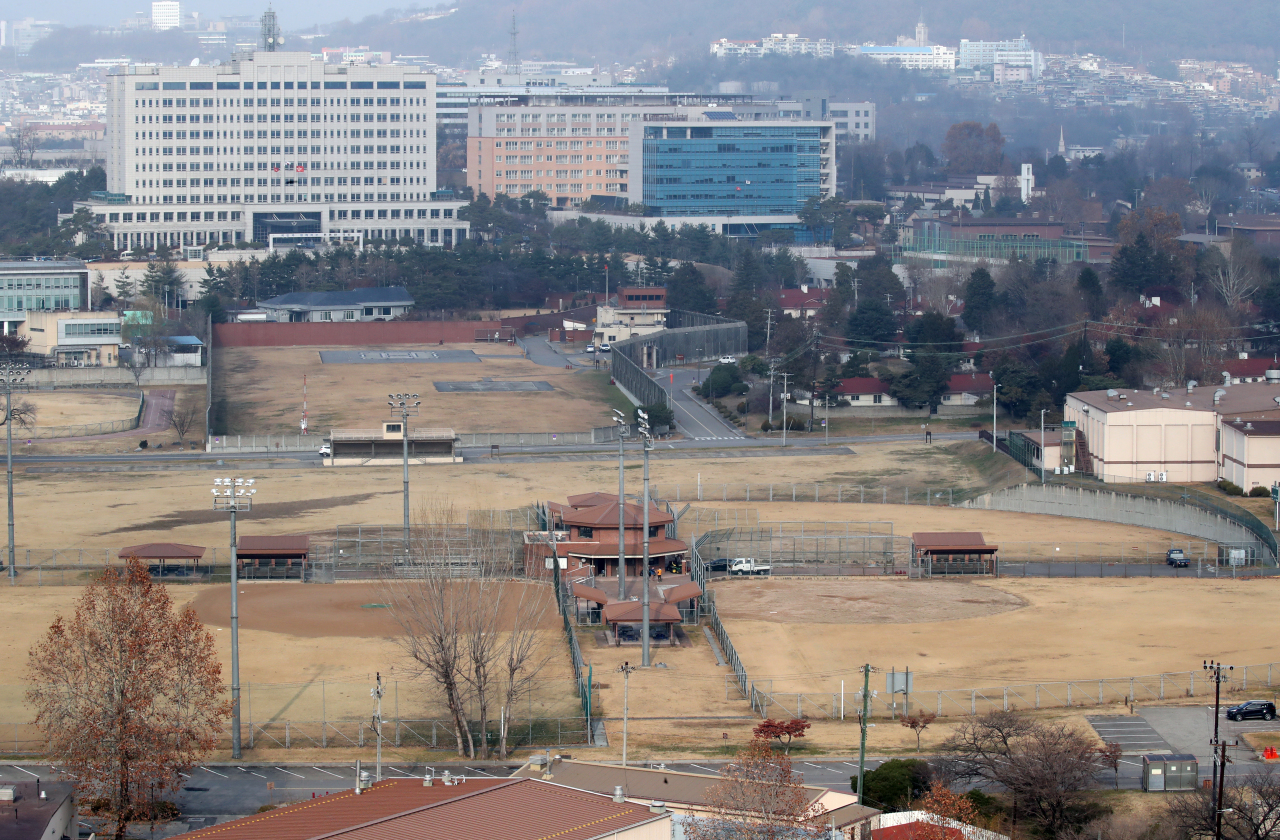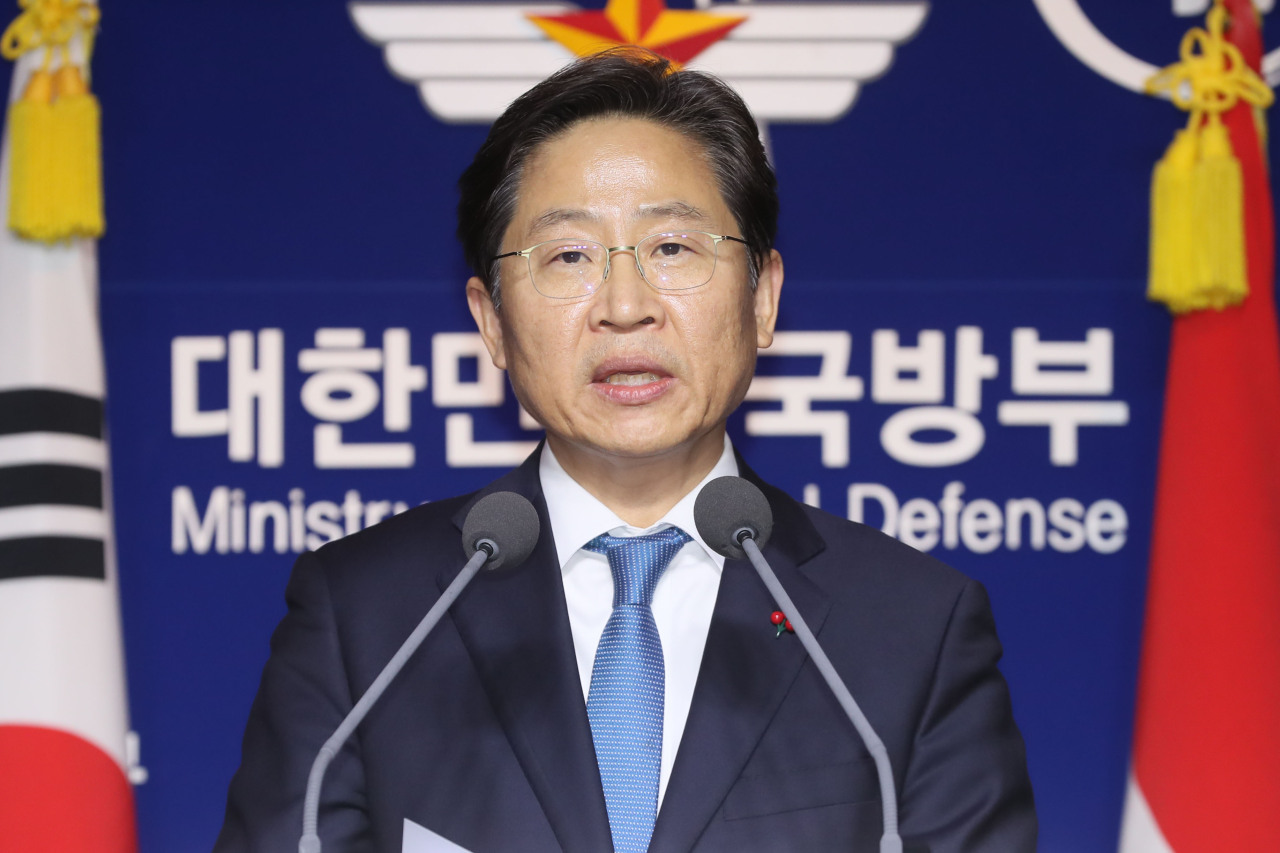South Korea and the US have finalized the return of four US military sites here and will start the return process for Yongsan Garrison in central Seoul, the government said Wednesday.
In a joint ministry briefing, the government announced that the US handed over control of the four sites previously used by US Forces Korea: Camps Eagle and Long in Wonju, Gangwon Province; parcels of Camp Market in Bupyeong, Incheon; and the Shea Range parcel located at Camp Hovey in Dongducheon, Gyeonggi Province.
Before the briefing, USFK Deputy Commander Lt. Gen. Kenneth Wilsbach and Director General Ko Yun-ju of the North American Affairs Bureau within Seoul’s Foreign Ministry presided over the 200th Status of Forces Agreement Joint Committee meeting at Camp Humphreys in Pyeongtaek, Gyeonggi Province, to finalize the decision, according to the USFK.
 |
(Yonhap) |
The four military bases have been vacant since October 2011, but the transition process had dragged on due to differences between the two sides over who should pay for the cleanup of the polluted soil and deal with other environmental concerns that arose while the areas were used by the US military.
According to a government official, both sides agree that soil at the military sites is contaminated with metal and oil, and in the case of Camp Market, dioxin.
The differences in their positions stem from a lack of specific regulations concerning the level of pollution and responsibility for the cleanup.
Only a supplementary memorandum for the Status of Forces Agreement states that the US would undertake to remedy contamination that poses “known, imminent and substantial endangerment to human health (KISE).”
The US maintains there has not been any immediate health threat caused by the contamination, while the South Korean government seeks to negotiate additional clauses detailing pollution levels, the official said.
The pollution issue remains unresolved, but Seoul said it decided on the early return of the sites on the condition that the two sides continue their negotiations.
 |
Lim Chan-woo, head of the USFK base relocation department under South Korea's Prime Minister’s Office, speaks at a joint ministry briefing on Wednesday. (Yonhap) |
“We have made the decision for the early return of the four bases, taking into consideration that delays would worsen the pollution over time and concerns among locals that delays may impede regional development of the areas,” Lim Chan-woo, head of the USFK base relocation department under the Prime Minister’s Office, said during the joint ministry briefing.
The cleanup of the four sites will be conducted and paid for by the Korean government for now, and the two sides will continue negotiations on payment, a government official said, adding that it would take an average of about two years for the sites to be cleaned up for usage.
The environmental dispute is likely to be a major factor in slowing down the return of the remaining 22 sites, including the Yongsan Garrison. The US has never assumed responsibility for such environmental cleanups at its overseas military sites, according to Seoul.
In a separate press release, the USFK said Wednesday’s decision on the four former US sites was the biggest land return since 2015 and that an additional 13 sites were ready for return, having been completely vacated and closed.
Seoul and Washington also agreed to initiate the return of Yongsan Garrison, the former headquarters established in 1957 after the Korean War for the US forces here.
The two allies signed the Land Partnership Plan in 2002 and the Yongsan Relocation Plan in 2004, agreeing to relocate the Seoul headquarters and other bases south, with large parts of them moving to Camp Humphreys in Pyeongtaek.
Seoul plans to transform the Yongsan site into a park, under a scheme announced in 2005.
“As a testament to our ROK-US alliance, USFK remains committed to returning installations as expeditiously as possible to ROK government control (in accordance with related agreements),” the USFK said in the press release, abbreviating the country’s official name, the Republic of Korea.
By Jo He-rim (
herim@heraldcorp.com)





![[Herald Interview] 'Trump will use tariffs as first line of defense for American manufacturing'](http://res.heraldm.com/phpwas/restmb_idxmake.php?idx=644&simg=/content/image/2024/11/26/20241126050017_0.jpg)

![[Health and care] Getting cancer young: Why cancer isn’t just an older person’s battle](http://res.heraldm.com/phpwas/restmb_idxmake.php?idx=644&simg=/content/image/2024/11/26/20241126050043_0.jpg)

